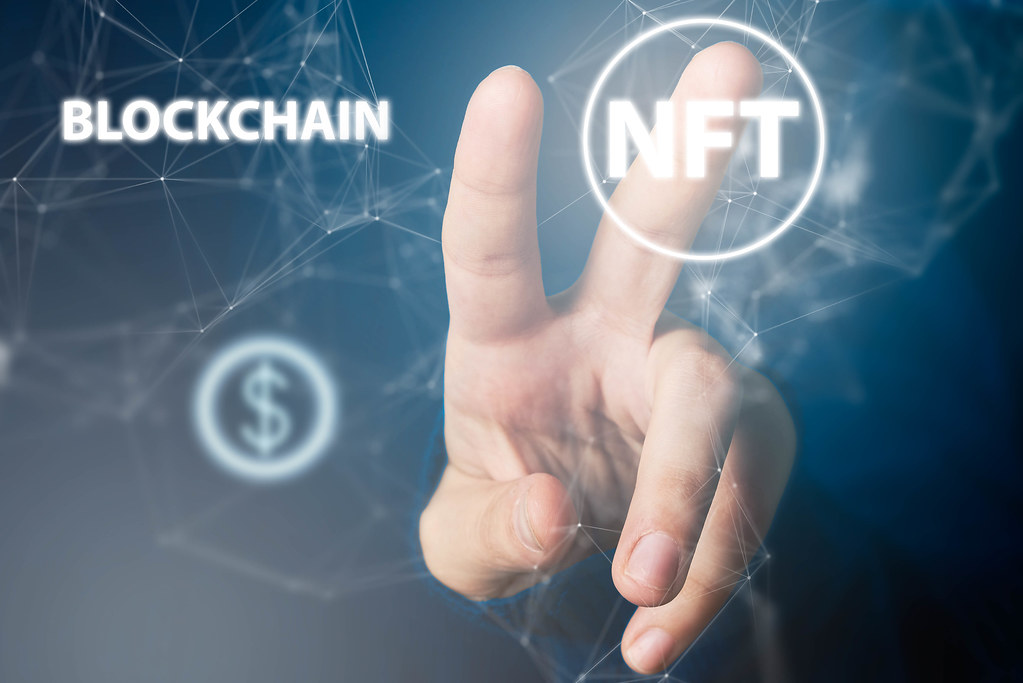
THE DIFFERENCE BETWEEN NFTs AND CRYPTOCURRENCIES
Before getting to NFT Marketplaces, let’s dig into why NFTs are different from cryptocurrencies.
NFTs are unique items you can’t replace with anything else. Unlikely bitcoins, where you will have the same product if you trade a bitcoin for another, non-fungible tokens‘ distinctiveness is their digital uniqueness.
The digital feature makes it very easy for creators to give their buyers something exclusive and rare. Most NFTs are, as a matter of fact, digital artworks that people are nowadays collecting as they were doing with physical paintings years ago. An excellent example of modern digital NFTs is CryptoKitties, an Ethereum blockchain game where users can buy, sell, or “breed” digital cats. Each of these pets is unique, just like real-life one are. In some ways, NFTs are similar to Bitcoins and other cryptocurrencies, except, of course, they are non-fungible, hence non-divisible.
BLOCKCHAINS AND NFTs
As for the differing blockchain technology each NFT has, now several blockchains facilitate NFTs – though not all of them buy and sell all types of NFT. Most NFT platforms require buyers to own a digital wallet to use cryptocurrencies as currency for their purchases.
WHAT’S AN NFT MARKETPLACE, AND WHY DO YOU NEED ONE?
Since most NFTs nowadays are digital, creators could get new ways to offer something unique and rare to their supporters with a fresh revenue surge.
According to a report by notable tech-tracking company L’Atelier BNP Paribas and nonfungible.com, in 2020, the NFT market was worth $250 million. The report also revealed a 299% growth rate in 2020 in the NFT markets.
Blockchain technology and NFTs offer artists or content creators an excellent opportunity to gain financial revenues for their works.
The big change is that artists will finally be independent of auction houses or galleries to sell or show their work. By selling artworks directly to a buyer in the form of an NFT, artists will also get a better share of the profits.
Furthermore, NFTs also include royalties to designate the original creator of a certain percentage of the consequent sales of the artwork.
Here are the things to know for making NFTs available for selling and buying:
- You require a digital wallet for storing NFTs and cryptocurrency to pay for transactions on your chosen blockchain platform.
- Purchase some cryptocurrency, possibly Ether, or the currency supported on your selected NFT provider.
- You may buy crypto through credit cards on different platforms such as PayPal, Coinbase Wallet, eToro, and Kraken.
- Users may transfer cryptocurrency from exchanges to their preferred wallets.

NOW, WHAT’S AN NFT MARKETPLACE?
NFT marketplaces have a central role in filling the gap between buyers and sellers.
Sometimes, these marketplaces may also offer extra tools for quickly creating even more NFTs.
The specialized marketplaces allow artists to put up their NFT artworks for sale. Buyers will then browse the marketplace for NFTs and purchase the one they like through bidding. It comes along as every NFT developer or enthusiast has to go through an NFT marketplace list to ensure valuable actions. These may be on artworks, collectibles, and other digital assets.
TOP NFT MARKETPLACES FOR CREATORS TO SELL NFT
- OpenSea: The largest NFT Marketplace, it offers a wide range of non-fungible tokens, including art, censorship-resistant domain names, virtual worlds, trading cards, sports, and collectibles.
- SuperRare: A marketplace to buy and sell unique, single-edition digital artworks. Read More >
- Rarible: a community-owned NFT marketplace, where creators can “mint” new NFTs to sell their creations.
- Foundation: A platform designed to bring digital creators, crypto natives, and collectors together to move the culture forward, it calls itself the new creative economy. Its primary focus is on digital art.
- Nifty Gateway: A digital art online auction platform for NFT sold NFTs by Beeple and other widely followed NFT artists.
Read similar NFT posts from Hue&Eye >







